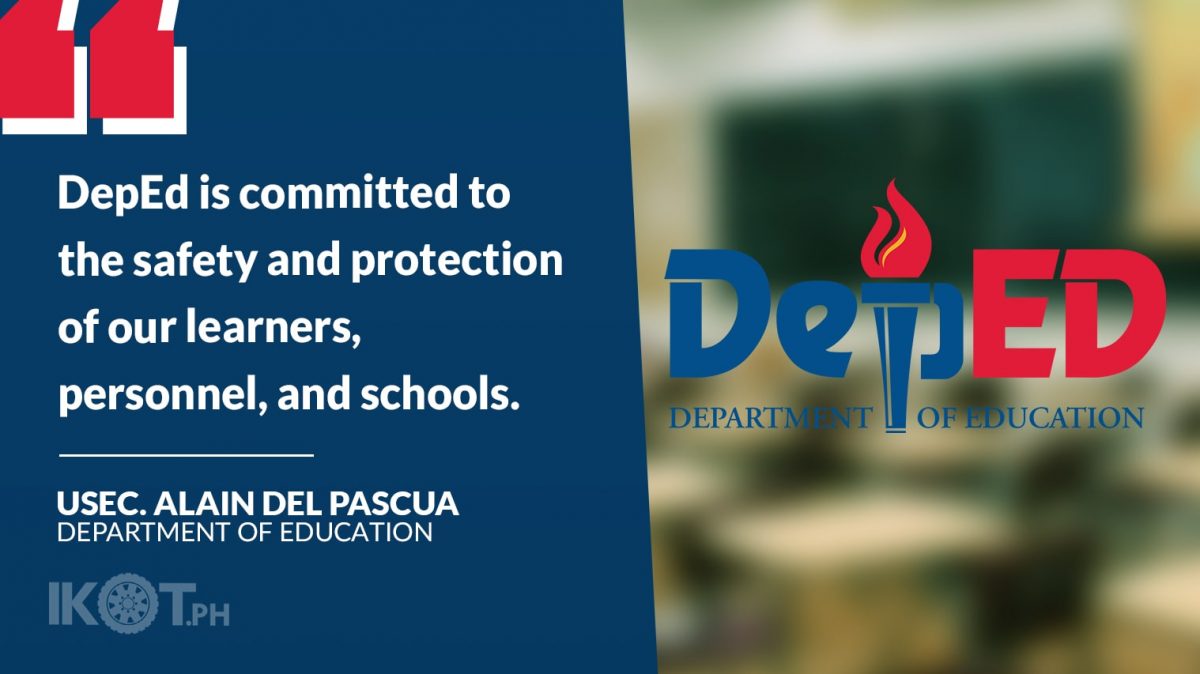The Department of Education (DepEd) formally launched the Disaster Risk Reduction and Management Information System (DRRMIS), an effective information management and communication system that will increase the safety precautions of all schools in the country.
DRRMIS is a product of the Education Safe from Disasters (Comprehensive School Safety Ecosystems) Program in partnership with Save the Children Philippines and Prudence Foundation.
It aims to transform national systems, strengthen capacity, and empower children to reduce the number of school days that learners lose due to the impact of hazardous events.
“DRRMIS will help build a resilient education sector through timely and accurate data gathering and decision-making.”
“DepEd is committed to the safety and protection of our learners, personnel, and schools. DRRMIS will help build a resilient education sector through timely and accurate data gathering and decision-making,” DepEd Undersecretary for Administration Alain Del Pascua said.
The program developed three applications for disaster preparedness and response as part of the information system.
The first app is the Rapid Assessment of Damages Report (RADaR).
This school-level reporting tool provides rapid information on schools’ damage and needs in the first 72 hours after a disaster.
The Department launched the RADaR app in September 2020 and it has been used in ten hazardous incidents since then.
Meanwhile, School Watching Application (SWApp) is a student-led hazard mapping checklist that aims to raise learners’ awareness of hazards within and around their schools.
Lastly is the Comprehensive School Safety (CSS) Monitoring Tool – a device schools use to assess their compliance with the CSS Framework as they implement safety initiatives.
The app provided schools and DepEd officials with online resources and training to better understand the applications and system.
DepEd’s Disaster Risk Reduction and Management Service (DRRMS) and the Information and Communications Technology Service (ICTS) facilitated the project that began in 20 school divisions of Region 3 (Central Luzon). Now in its third year, DRRMIS is ready for a nationwide roll-out in phases.
“We at Save the Children continue to work hard to ensure that children are kept safe and get the best start in life by capacitating them and building their resilience against disasters and emergencies,” said Atty. Alberto Muyot, CEO of Save the Children Philippines.
“The development of this innovative DRR information management system will help ensure quality, consistent, and timely data collection resulting in better plans and programs for children’s safety from all hazards,” Muyot added.
“Supporting programs and initiatives that reinforce disaster resilience of Filipino families is an important advocacy of Pru Life UK. We are fortunate to contribute to making a difference in our communities through our community investment arm, Prudence Foundation,” Eng Teng Wong, Pru Life UK President and CEO, shared.
Prudence Foundation, the community investment arm of Prudential plc across Asia and Africa, aims to bring safety and protection to as many people across their communities as possible through sustainable, long-term initiatives focused on Education, Health, and Safety.
“The Comprehensive Safe School project will bring about transformational change for children and education resilience in the Philippines.”
“Prudence Foundation has long been supporting disaster risk reduction. We have been delighted to be involved in this program since its inception. Today’s event is a testament to an effective and successful cross-sectoral partnership between the Department of Education, Save the Children, and Prudence Foundation. Through our shared vision and collaboration, we strongly believe the Comprehensive Safe School project will bring about transformational change for children and education resilience in the Philippines,” Marc Fancy, Executive Director of Prudence Foundation, said.
As part of the launch, Save the Children and Prudence Foundation turned over some technology devices to support the use of the DRRMIS. These included several units of televisions, laptops, desktop computers, and tablets.
Recipients of these gadgets were the DRRMS Central Office, Region 3 pilot schools, and Region 5 School Disaster Risk Reduction (DRR) Coordinators.
To date, RADaR has been used by more than 21,000 schools across the 17 regions in the Philippines. The program aims to reach all 47,000 schools nationwide, benefitting more than 20 million students in the future. These efforts contribute to DepEd’s vision that ‘Public Schools of the Future are Safe Schools’


